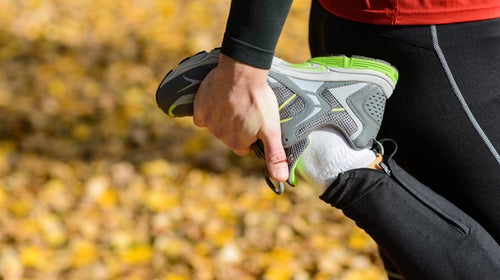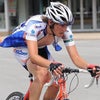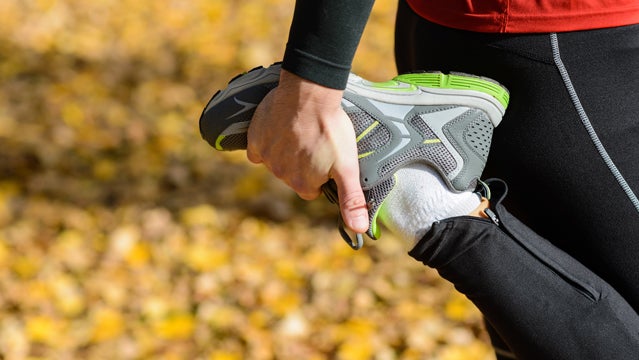ABSTRACT: No two warm-ups look alike. Some are long, static, staid. Others are short and dynamic—and pull in 20 million views on YouTube, at least when they feature a . But they all supposedly have one thing in common: A positive effect on performance. Now, researchers are saying something unexpected: A too-long warm-up may actually decrease performance. Because there’s something perverse about losing due to your pre-race routine, we have to ask: How should you be warming up?
HYPOTHESIS: The best warm-up is quick and (relatively) painless. Save your energy for the race.
METHODS: Journals are filled with warm-up studies, but few actually compare real-world routines to the tantalizing alternatives. Luckily, a study in pitted a hypothetical warm-up against a traditional routine.
Researchers compared the effects of two warm-ups on the sprint power and muscle reactions of 10 track cyclists. The traditional warm-up was based on the advice of national-level coaches and included four six-second sprints over an hour of effort. The experimental design was only 17 minutes long and included a single six-second sprint. In other words, it was easy.
Riders completed a 30-second-long sprint to test their performance and were given before-and-after tests to determine their muscles‘ force production.
RESULTS: Riders using the easier warm-up performed significantly better than those on the harder program. Specifically, their peak sprint power was 6.2 percent higher and they showed less muscle fatigue. What’s more: Riders on the traditional plan experienced a 15 percent reduction in force production, says Elias K. Tomaras, one of the study’s authors and a graduate student at the University of Calgary.
DISCUSSION: It’s true. “A ton of people warm up too intensely,” says Allen Lim, Ph.D., founder of , an “active nourishment company” famous for helping train professional cyclists like Lance Armstrong, Floyd Landis, and Taylor Phinney. An effective warm-up increases performance by raising muscle temperature and redistributing blood flow to the muscles that need it (along with causing a host of cellular-level changes), he says. But it only takes a few minutes to harness the benefits—far less than what most people are doing. “In principal, you only need to get to the point where you break a sweat and you start to feel good,” he says.
As your warm-up goes on, you run the risk of overheating—and quashing your performance—or going through too much of your body’s energy supply, Lim says. What’s more, any exercise has the potential to reduce muscle force through fatigue, according to Tomaras. A workout that’s too long not only wastes time, but it squanders performance. “Somewhere between nothing and 12 hours is too much,” he says. The problem: Research hasn’t drawn that line yet, nor will it ever be able to for every individual in every discipline.
It’s hard to convince athletes that less is more, but the key is to stick to the side of caution, Lim says. It’s also critical to keep in mind the race they’ll be riding or running. Ahead of a cycling road race—which is rarely decided in the first moments—an athlete might not even need a warm-up. But going into a time trial (an all-out effort), Lim will have his riders follow a harder routine for an hour-and-a-half, incorporating two five-minute-long intervals at threshold and a two- to three-minute-long interval at the pace they can hold for 10 minutes.
All told, Lim’s athletes “may only actually ride the bicycle for 45-50 minutes” ahead of their most intense races, he says. “The rest of the time is spent basically screwing around—fussing with their skin suits, fussing with their helmets, making sure their equipment is dialed, pre-hydrating, trying to stay cool.” What’s more: Timing matters less than you think it does. “There’s really no difference in performance between doing a great warm-up and sitting around and hanging out versus doing a great warm-up and going straight to the line,” Lim says.
Overall, elite athletes come with their own set of special considerations, says , a physician-researcher and one of the world’s leading experts on human performance and exercise physiology. They often resist shorter warm-ups ahead of competition because of their experiences in training. Almost instinctively, athletes know that the second interval is almost always easier than the first. During intense bouts of training and competition, they often up the intensity or duration of their warm-ups to make that first interval feel easier. But ahead of a big competition, they fail to “calibrate to the pre-race rest,” he says. They base their warm-ups on what worked during training—when they were fatigued—instead of what succeeds ahead of racing. “Sometimes your legs or arms just start feeling good, and you don’t know what to do,” he says.
While longer, harder warm-ups may be unnecessary, particularly when you’ve tapered for an event, multiple warm-ups can be advantageous, says Lim. Exercise in the morning, and your body is primed for afternoon competition—your blood vessels become more sensitive to exercise and “are essentially easier to dilate.” Your body will also do a better job of refueling itself at breakfast if you start with an early-morning ride, run, or bout of core work. Ahead of an afternoon race or a big day of training, a light morning warm-up will prepare you for peak performance.
While the researchers are working toward a consensus, you should constantly be evaluating your pre-race routines to see what works best for you, says Lim. But don’t get hung up on the details. “Two guys can have completely different routines, and they’ll do equally as well so long as they have confidence in their routines and aren’t stressed by them,” he says.
CONCLUSION: Break a sweat and start to feel good, but don’t go much harder or longer than that. And once you have a routine down, commit it to paper. “The best athletes in the world have a very, very precise warm-up routine,” says Lim. “That does not only include what they actually do in the workout, but it also includes their food timing, what they eat that day, what they’re doing when they get to the event…. What you want to do is create as much calm and confidence and establish as standard a routine as possible.”


